Barn swallows are small, sleek birds known for their distinctive long, pointed wings and deeply forked tails. They have a glossy blue-black plumage on their backs and a creamy white underside with rusty-colored throat and forehead patches. These agile birds are skilled fliers, often seen darting through the air catching insects on the wing.
In Greenville, SC, barn swallows can sometimes cause problems, particularly when they choose to nest in or around buildings, bridges, or other man-made structures. This horse farm right outside Greenville, SC had several barn swallows nesting in the riding ring. The accumulation of droppings had become dangerous to the horses and created a bad smell.
Bird Netting Barn Swallow Control
Critter Control of Greenville used bird netting to remove barn swallows’ access to the rafters. Bird netting is an efficient method for managing barn swallow populations and preventing them from nesting in unwanted areas while minimizing harm to the birds themselves.
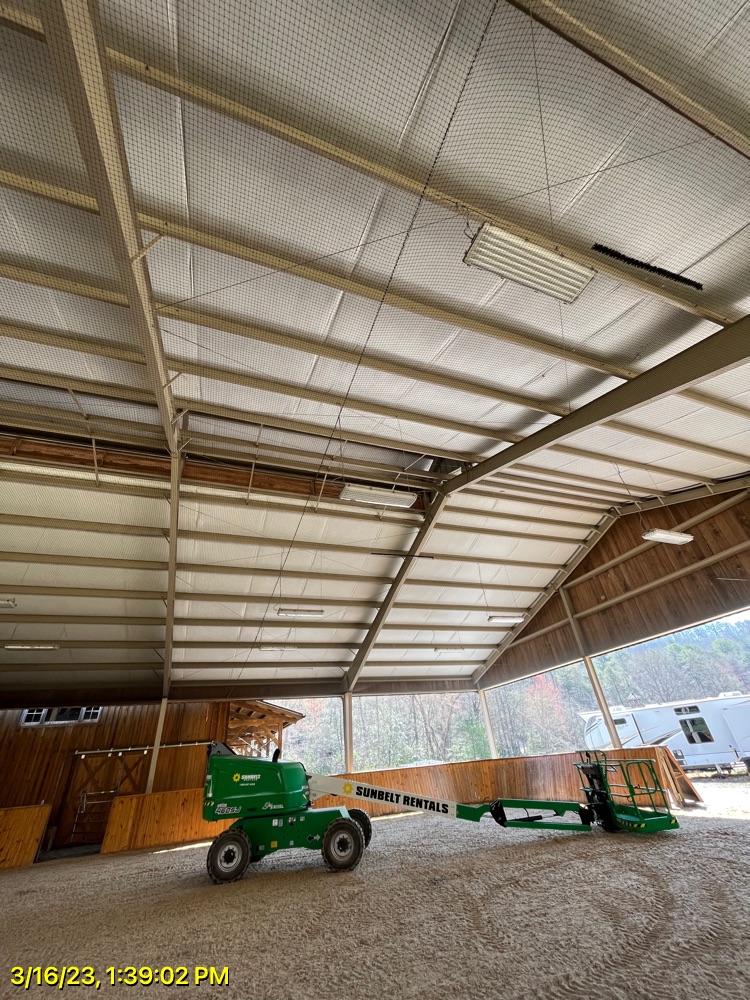

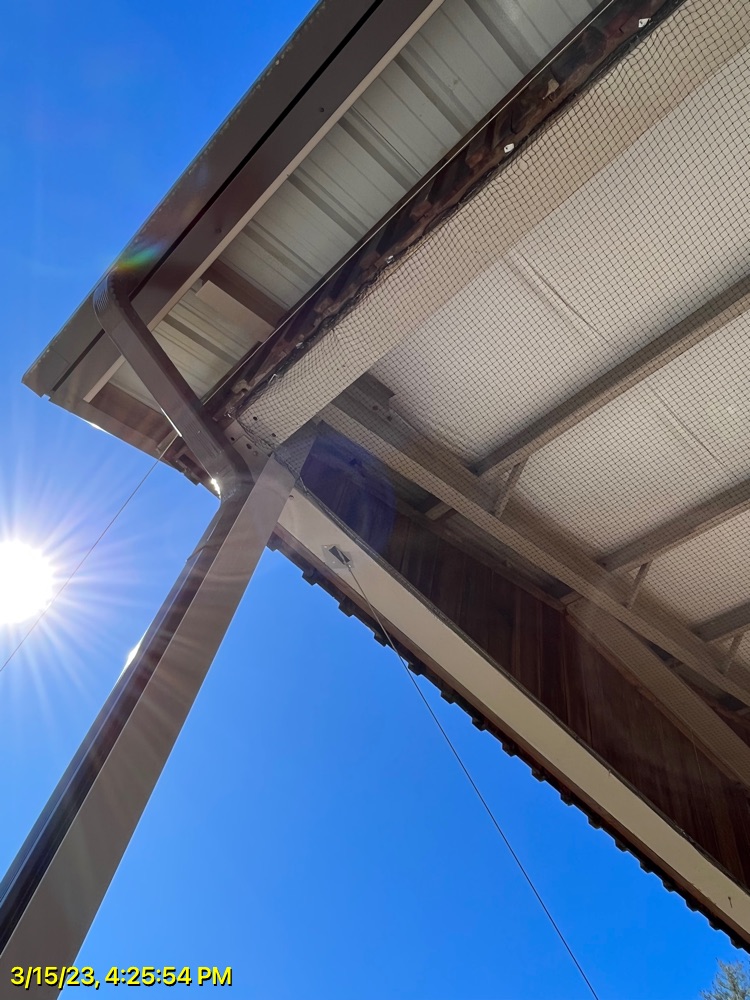

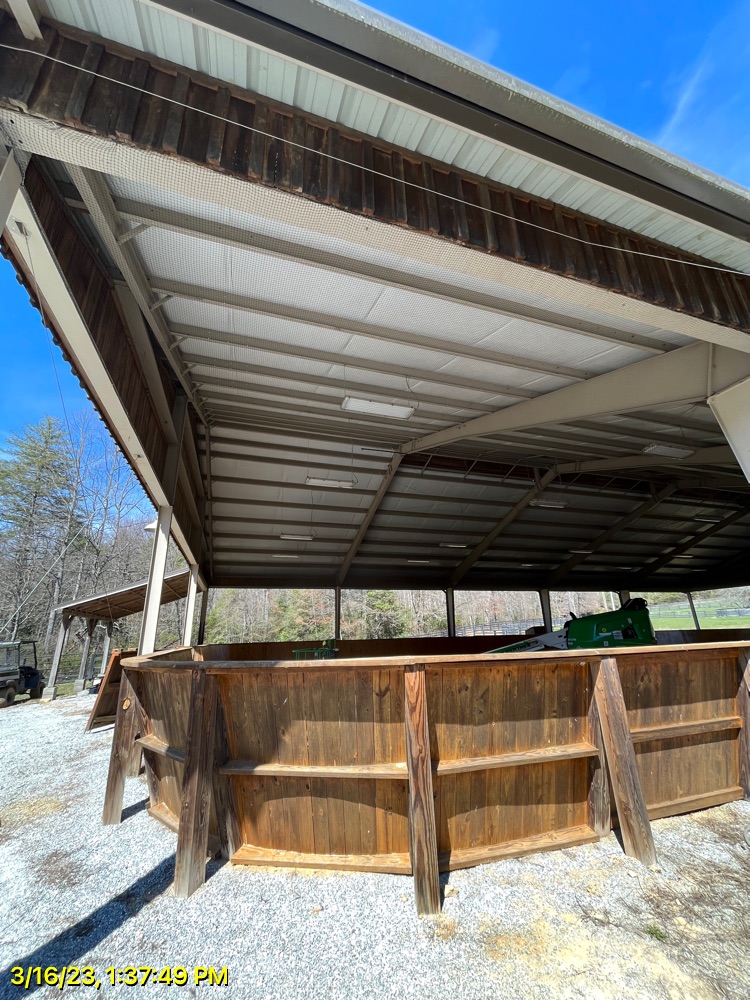
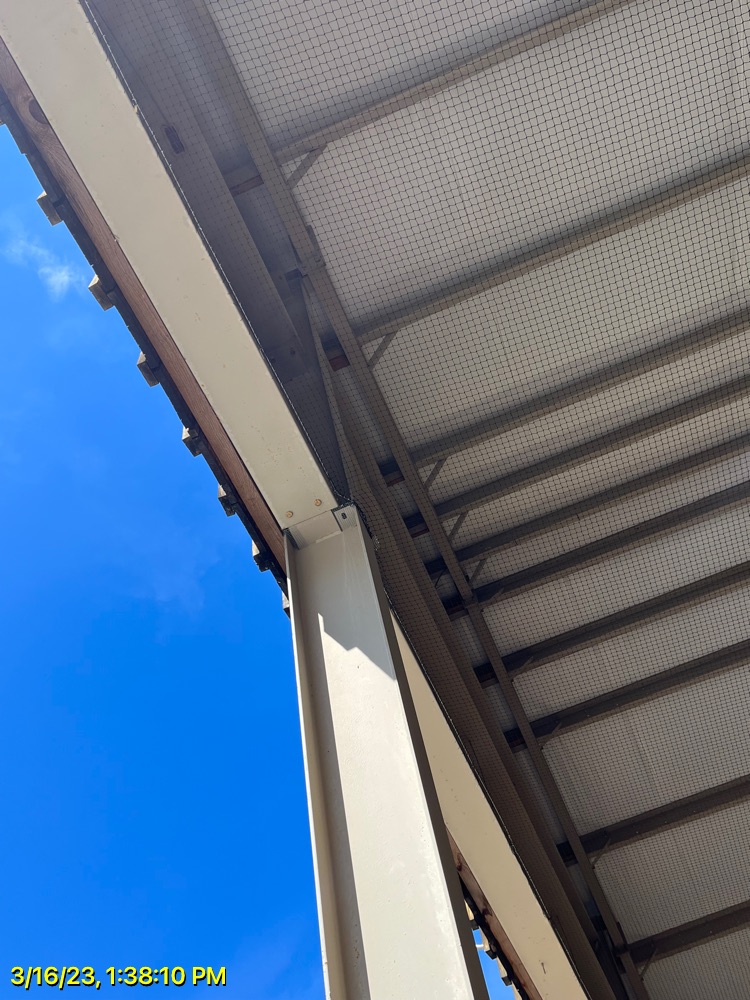

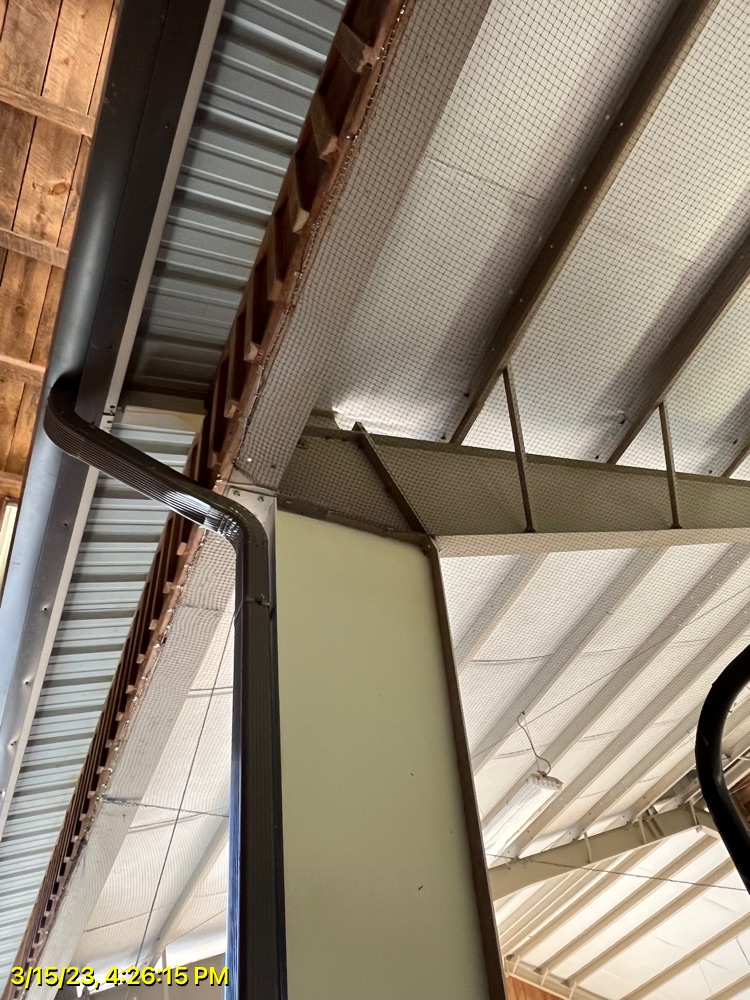
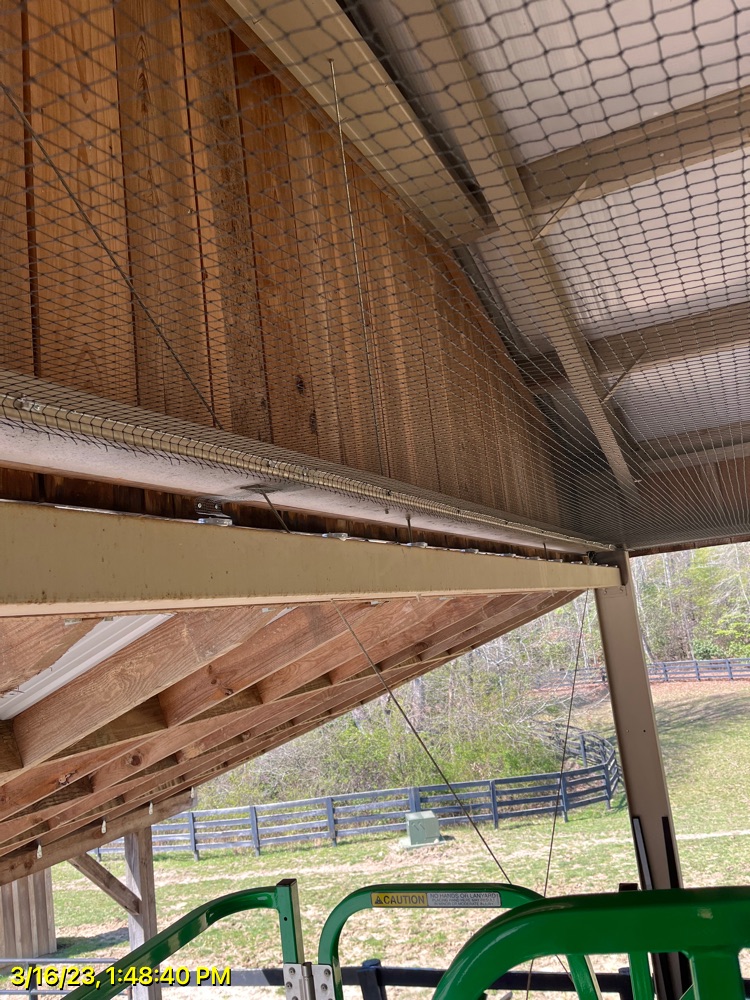
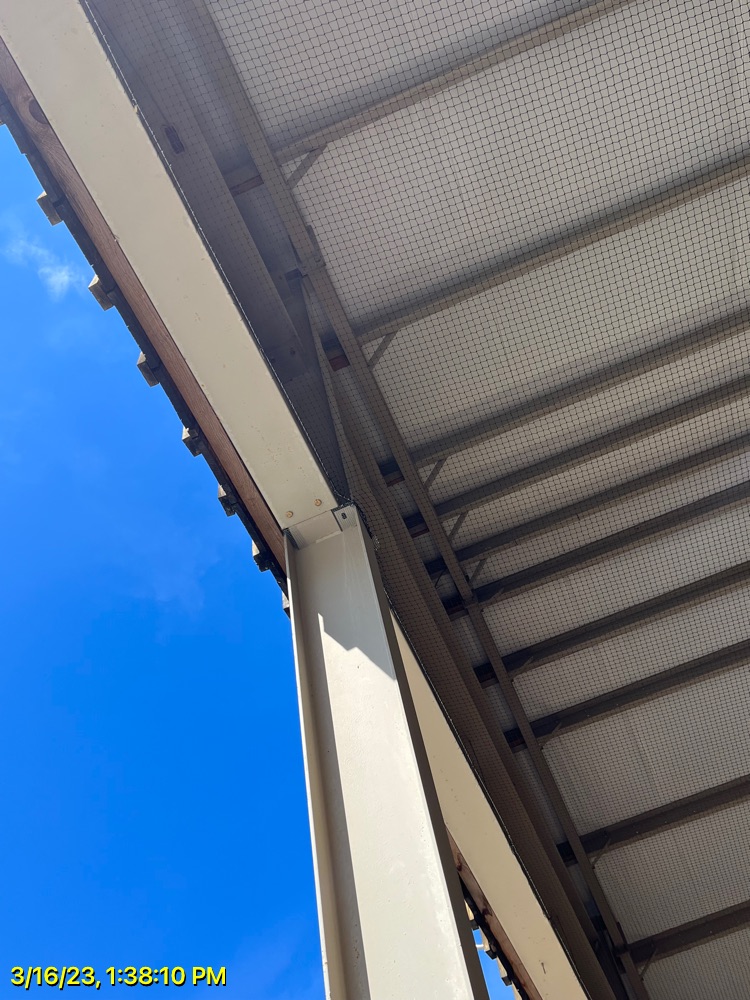
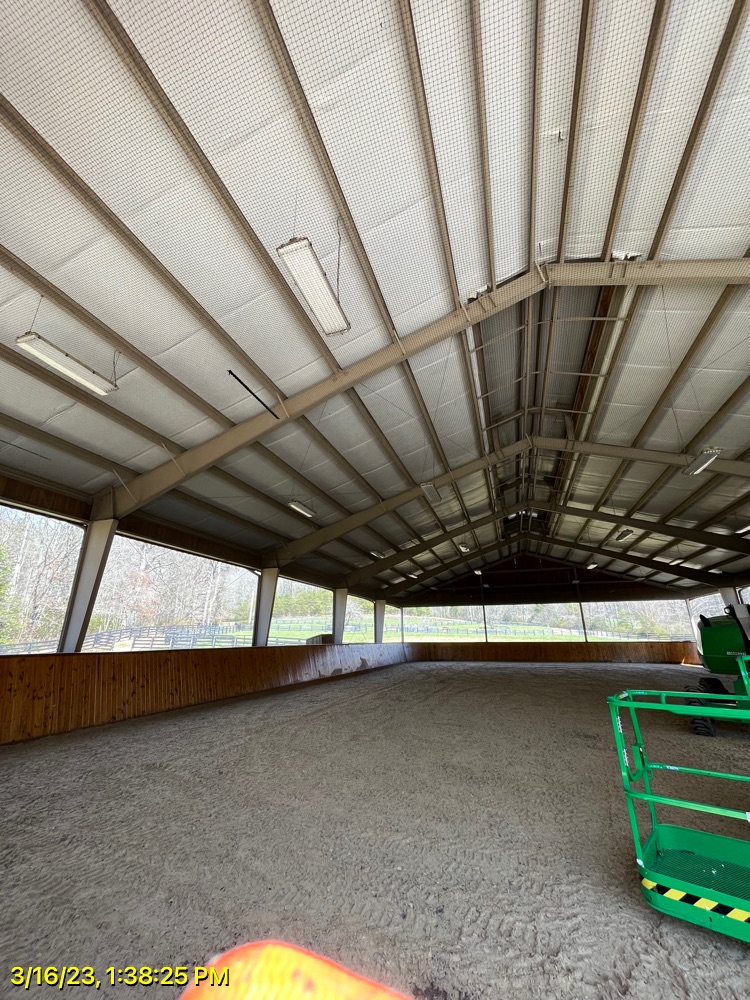
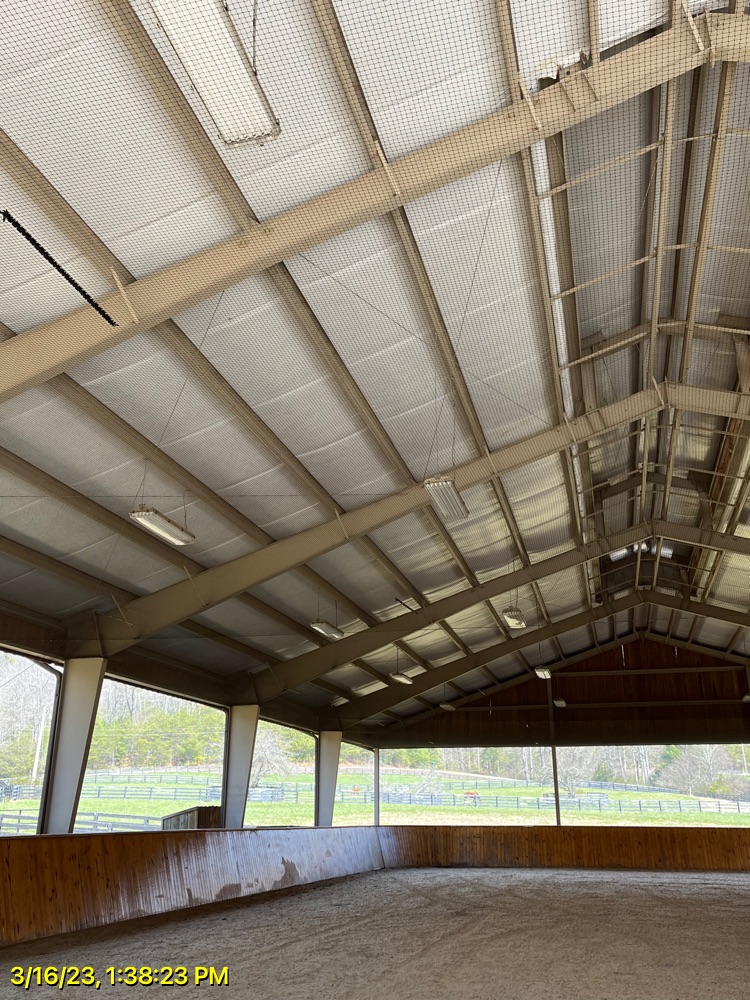


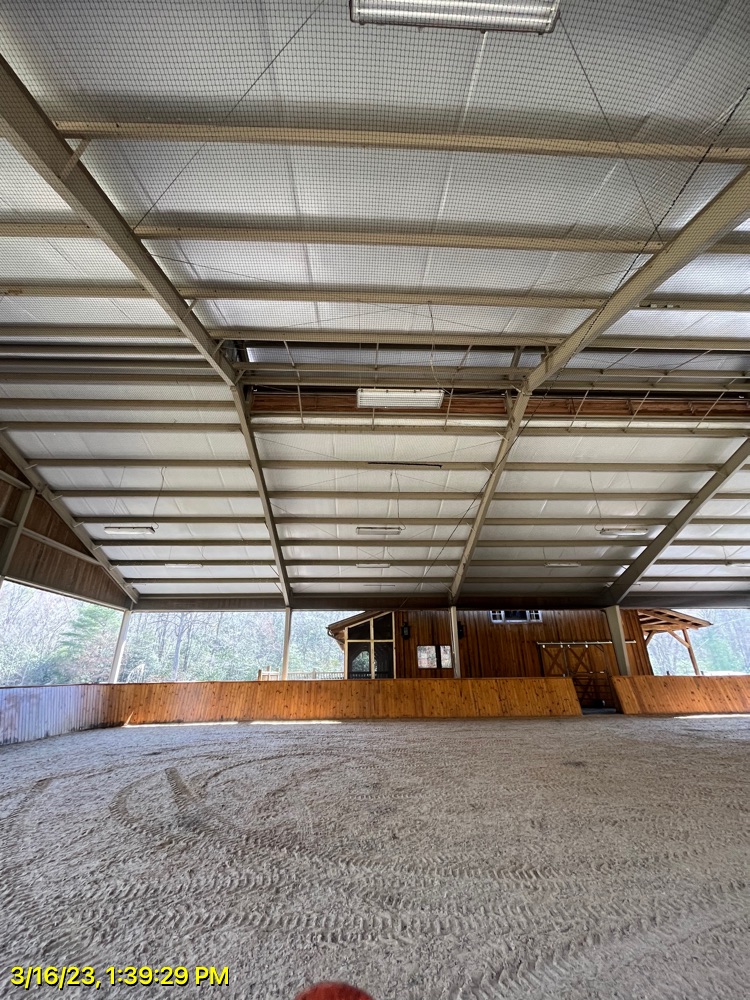
Problems from Barn Swallow
Mess and Noise: Barn swallows build their nests out of mud, which they often affix to vertical surfaces like the undersides of eaves, bridges, or the insides of barns and sheds. The accumulation of mud and bird droppings can create unsightly messes and unpleasant odors. Additionally, the birds can be quite vocal, especially during the breeding season, which may be disruptive in urban or residential areas.
Structural Damage: The acidic nature of barn swallow droppings can potentially corrode and damage building materials over time. Their nests can also clog drainage systems and cause water damage.
Health Concerns: Accumulated bird droppings can harbor bacteria, fungi, and parasites, posing health risks to humans, especially if the droppings are in areas where people frequent or where food is prepared or consumed.
Legal Issues: In some cases, the presence of barn swallow nests on structures can raise legal concerns, especially if the structures are designated as historic or protected.
Photos and information provided by Critter Control of Greenville, SC